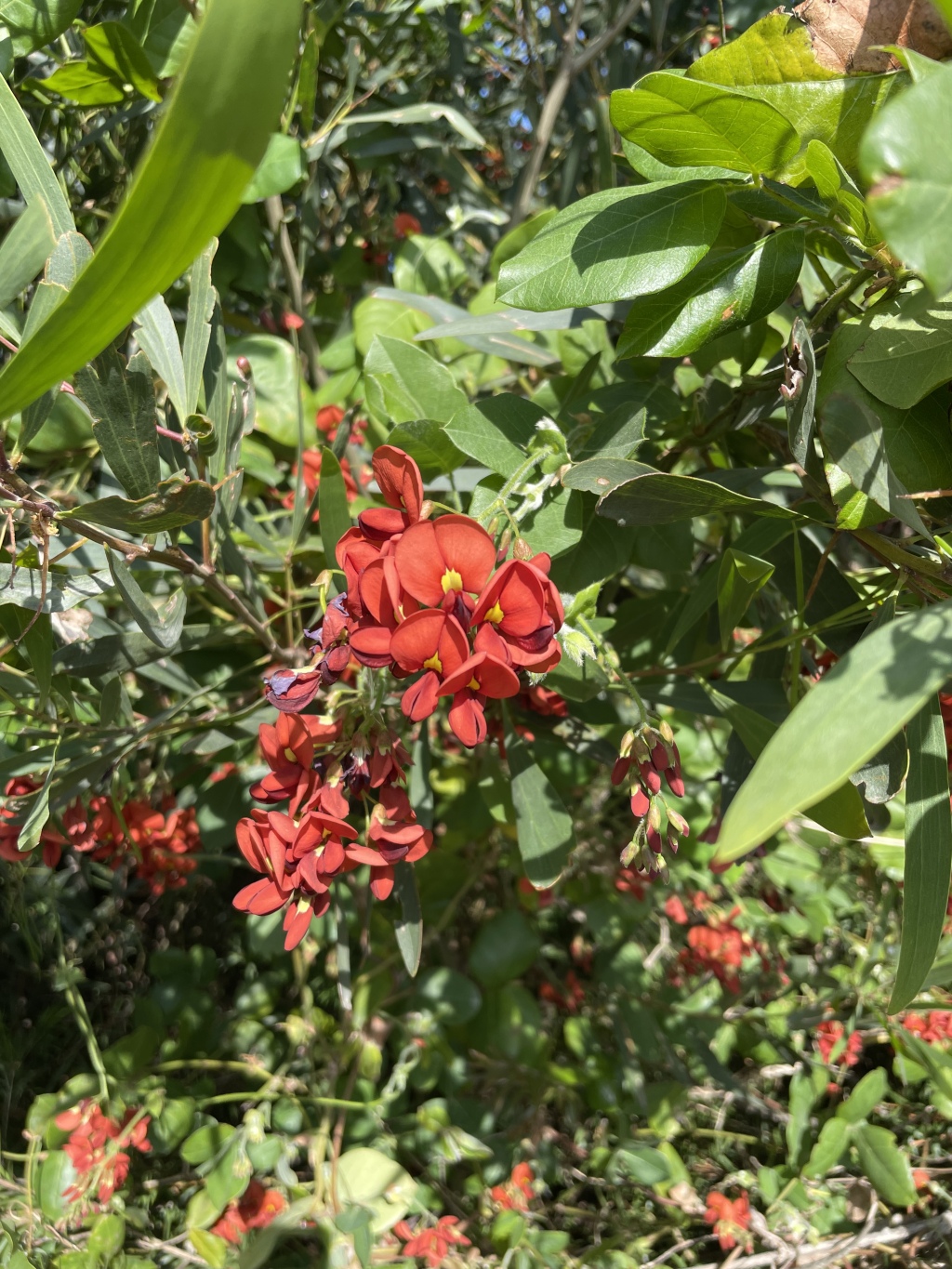Kennedia lateritia
F.Muell.Robust, woody climber; stems twining, to 4 m long, with spreading silky hairs. Leaflets broadly elliptic to orbicular or broadly obovate, 5–8.5 cm long, 3.5–7.5 cm wide, upper surface more or less glabrous, lower surface with scattered silky hairs, apices obtuse to notched, sometimes mucronate; petiole 3–5 cm long; lateral leaflets shortly petiolulate; upper leaflet on petiolule to c. 8 mm long; stipules broadly ovate to cordate, 15–20 mm long, leafy, often united; stipellae lanceolate or falcate, 2–7 mm long. Inflorescences 21–24-flowered, flowers in cluster of 3; peduncle to c. 10 cm long; pedicle c. 8 mm long; bracts 7–8 mm long, silky-hairy, caducous. Calyx 6–7 mm long, subglabrous. Corolla 15–18 mm long, orange-red with basal yellow blotch; standard obovate to suborbicular; wings subequal to keel. Pod narrow-cylindric, 40–50 mm long, 6–10 mm wide, inflated, glabrous; seeds produced, but not seen for this treatment. Flowers Oct.–Nov.
VVP, GipP, EGL. Endemic to the Augusta-Cape Leeuwin area on the south coast of Western Australia, sometimes grown as an ornamental, recorded in Victoria near Mallacoota where it is has escaped cultivation.
 Spinning
Spinning
